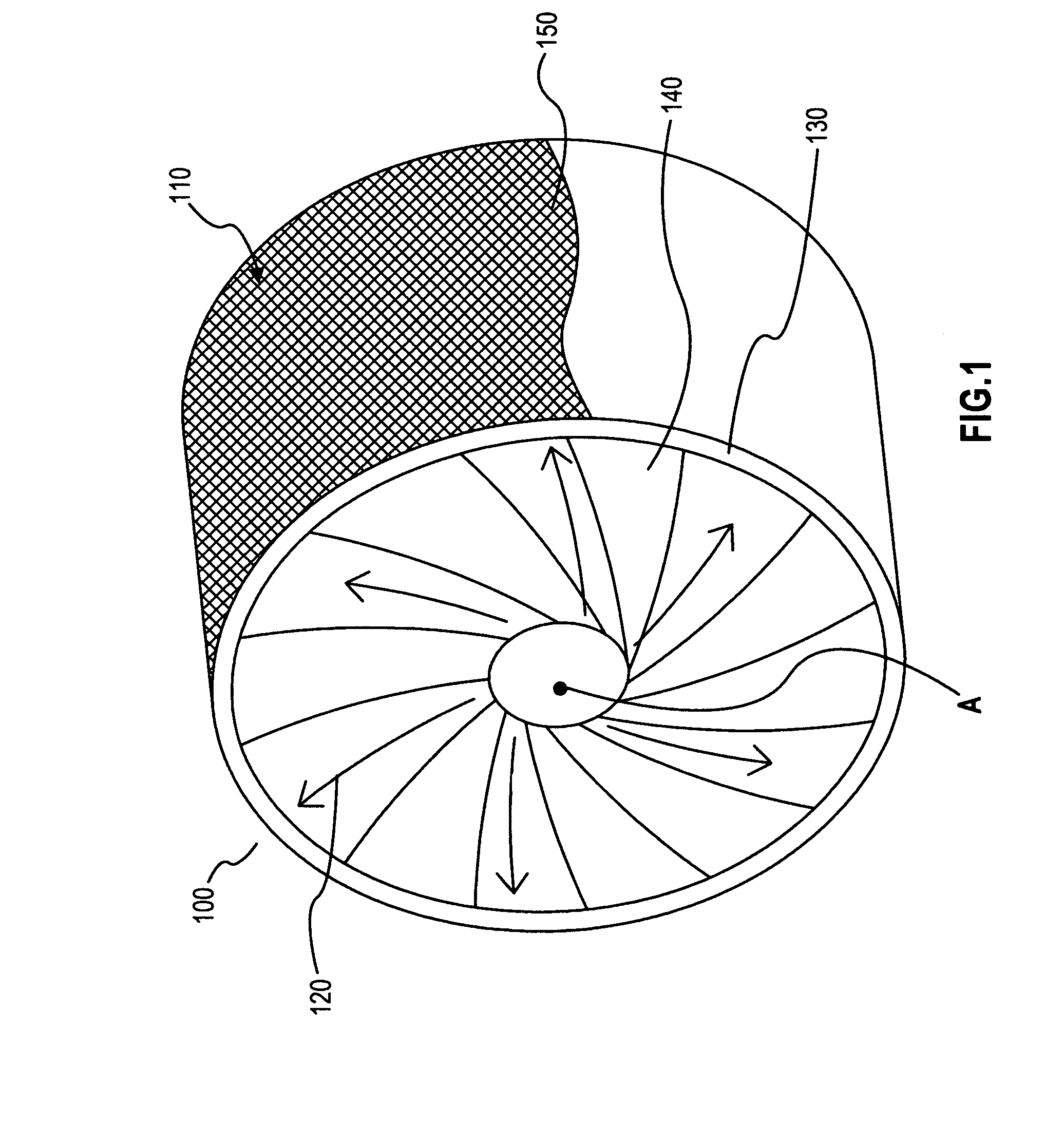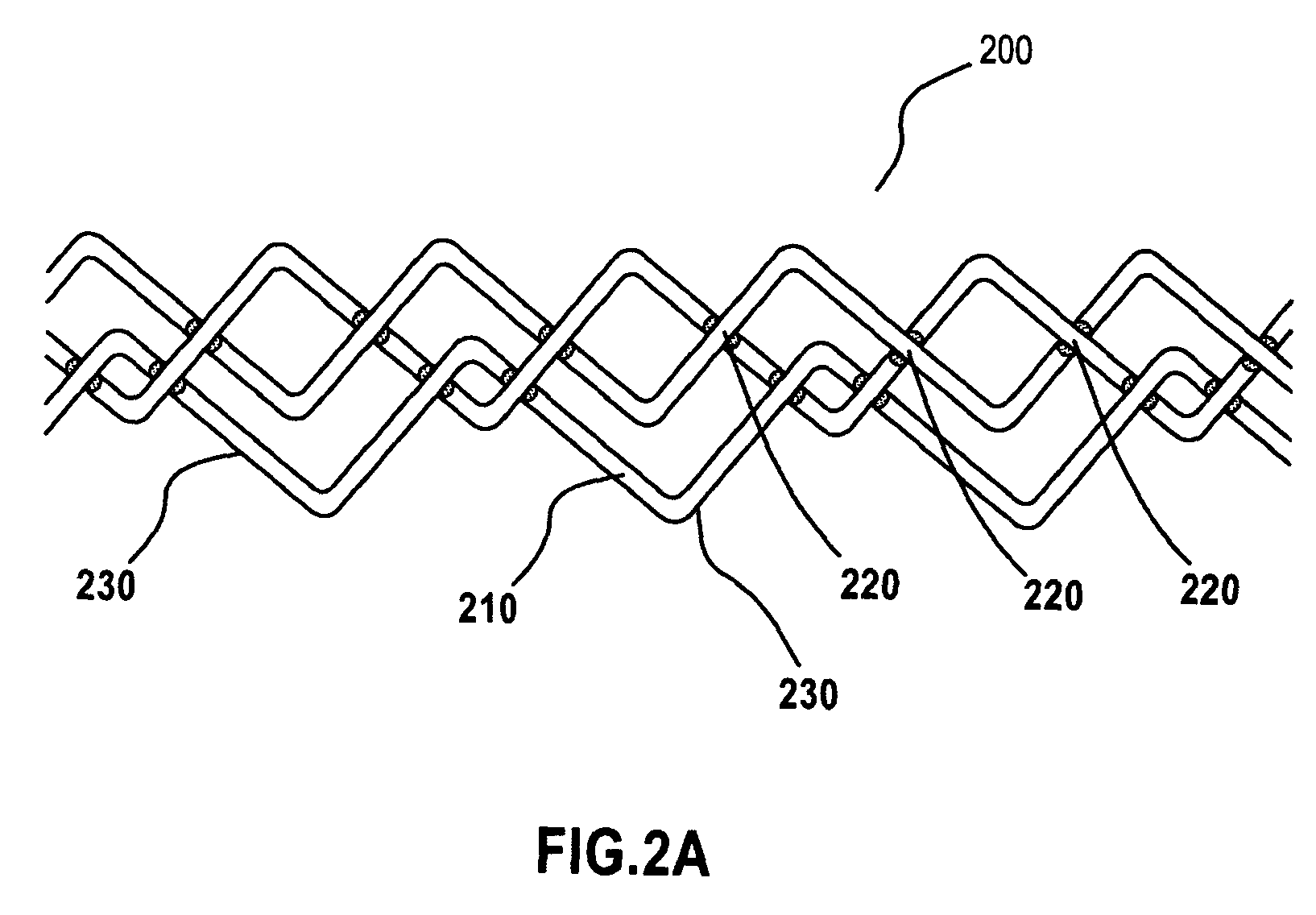Secondary blade portion containment device
a technology for containment devices and blades, which is applied in the direction of safety/regulatory devices, sustainable transportation, climate sustainability, etc., can solve the problems of loss of control of aircraft or structural damage, severe damage to aircraft, and passengers' injuries, so as to improve the confinement of blades and improve the effect of preventing damage, variable attachment strengths, and variable failure levels
- Summary
- Abstract
- Description
- Claims
- Application Information
AI Technical Summary
Benefits of technology
Problems solved by technology
Method used
Image
Examples
Embodiment Construction
[0019]These and other features and advantages of this invention are described in, or are apparent from the following detailed description and figures for various exemplary aspects of a blade containment device according to the current invention.
[0020]FIG. 1 is a perspective representative view of a blade containment device 100 that may encompass the nacelle or engine casing 130 of an airplane, according to an exemplary aspect of the current invention. In FIG. 1, the engine casing 130 is covered at least partially by the blade containment device which may be a flexible interwoven structure or net 150. According to various aspects of the current invention, the blade containment net 150 may be embedded in the engine casing 130. The blade containment device or net 150 may comprise a net with a mesh pattern 110. The mesh pattern may vary and may be, for example, a circumferential mesh pattern, or an axial mesh pattern. In the event of a blade failure or blade out, the net 150 may deploy ...
PUM
 Login to View More
Login to View More Abstract
Description
Claims
Application Information
 Login to View More
Login to View More - R&D
- Intellectual Property
- Life Sciences
- Materials
- Tech Scout
- Unparalleled Data Quality
- Higher Quality Content
- 60% Fewer Hallucinations
Browse by: Latest US Patents, China's latest patents, Technical Efficacy Thesaurus, Application Domain, Technology Topic, Popular Technical Reports.
© 2025 PatSnap. All rights reserved.Legal|Privacy policy|Modern Slavery Act Transparency Statement|Sitemap|About US| Contact US: help@patsnap.com



